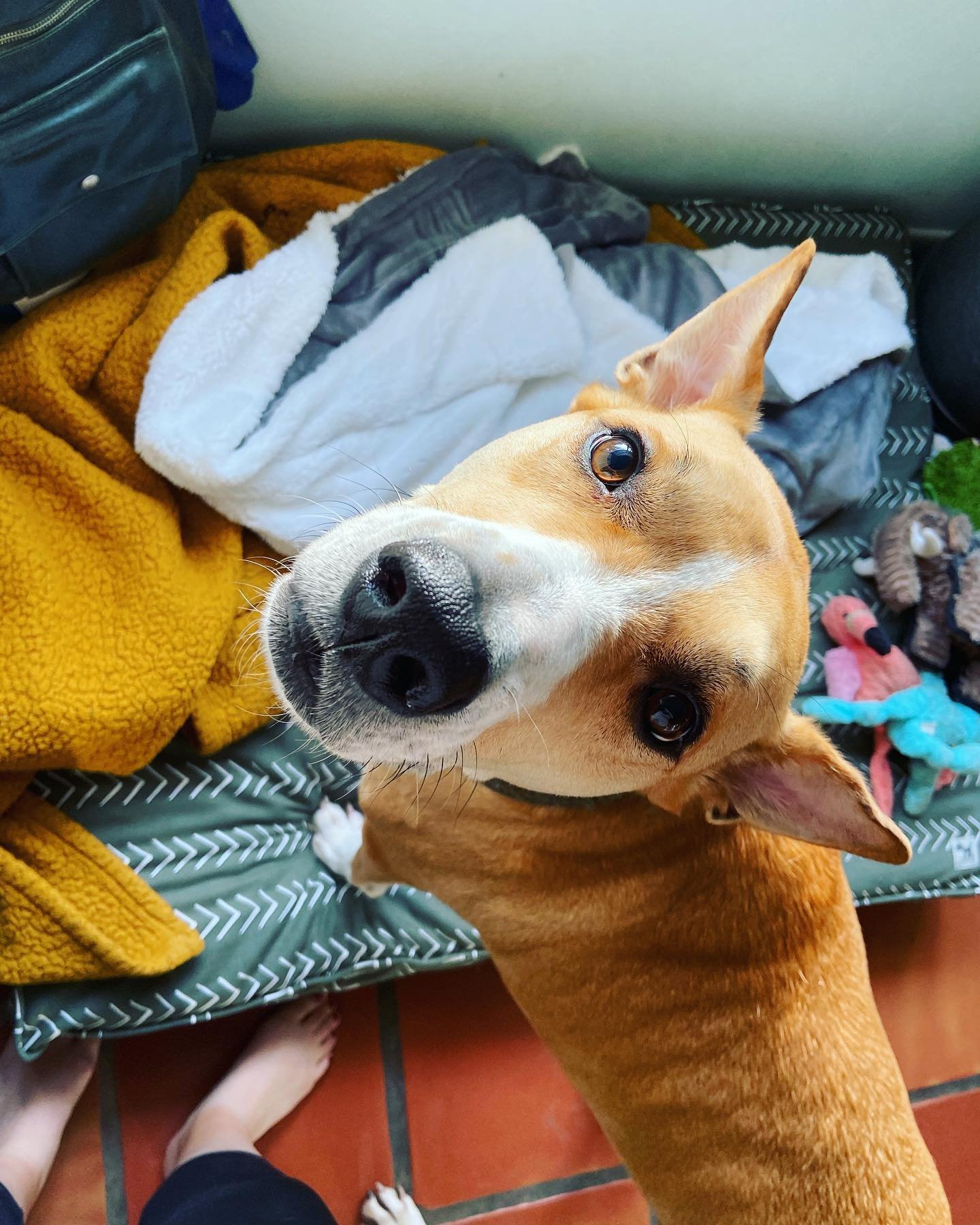Create a Comfort Area For Your Dog
Do you have a dog who would benefit from having their own space in certain situations? Create a comfort area for them!
A comfort area can help ensure safety, prevent a dog from practicing unwanted behaviors or an emotional state we’re trying to change, and create a better & more successful experience for everyone.
They can be especially helpful for dogs who find certain situations overwhelming. Those situations might be scary, overexciting or overstimulating, or the dog may just be working on appropriate behavior in a certain context where separation is helpful as they learn. Some of the most common contexts a comfort area can be useful for include visitors to the home, the presence of babies or small children, slow introduction/re-integration or context specific separation for dogs or dogs/cats, dogs who struggle with emotional or behavioral regulation generally or contextually, and a retreat for sound sensitive dogs or dogs frightened by events like fireworks, storms, or nearby construction.
Comfort areas often work in tandem with training & behavior modification as we help a dog feel better about a given situation and build the skills they need to manage it more successfully.
Choose a Space That Works for Your Dog’s Needs and the Situation…
The space should be large enough that the dog does not feel trapped or frustrated.
Some dogs do better where they can still see the action and feel included. Other dogs do better further away in their own area. What works best also depends on what you are using the area for - the same dog may do better closer for some things and further away for others.
You may choose to separate the space with a divider like a baby gate or full door or to leave the space open access depending on the situation.
For sound sensitivities and events like storms/fireworks, the area may also include a sheltered hiding space.
Add Favorite Comfort and Enrichment Items…
Include a comfortable resting place, favorite toys, and other special favorite items (our guy Socks loves blankets).
Provide a variety of interactive enrichment items like food based puzzle toys and chews. If a dog is overwhelmed, they may have difficulty focusing on just one item but can often bounce between a few of them unless they are too overwhelmed to eat.
Integrate scent based enrichment like those that have been shown to promote relaxation.
Manage Sound…
Play soft music in the comfort area. Studies have found that dogs prefer reggae, soft rock, and classical and respond better when the music is rotated rather than always the same. If in doubt, use the curated stations and play lists on Pandora, Spotify, or YouTube or make your own!
Buffer sound when needed. This may be for a scary event like a storm or visitors the dog is frightened of. You can use white/pink noise or set up a box fan outside of a closed door.
For significant sound sensitivities or phobias, you may also add buffers like sound canceling panels/curtains or wearable items like Mutt Muffs.
Spend Time Reinforcing Calm and Building a Positive Association with the Space…
Engage in low key activities like relaxation protocols, training and enrichment games, and interactive toys with your dog in their comfort area.
Spend downtime in that space with your dog. Bring a book and cozy up for some soft affection and relaxation.
Reinforce calm behavior in that space. Softly praise your dog and provide periodic food rewards when they are relaxing and independently engaging with enrichment items in their comfort area.
Use Calming Supplements and Medications As Needed…
For fear/anxiety based behaviors, phobias, and significant emotional/behavioral regulation issues, talk with your vet or a veterinary behaviorist about whether calming supplements or medication may be helpful.
You may also wish to try environmental supports like a DAP (dog appeasing pheromone) diffuser or spray in the area.
And as with any behavior support or intervention, ask your trainer for help when needed!



